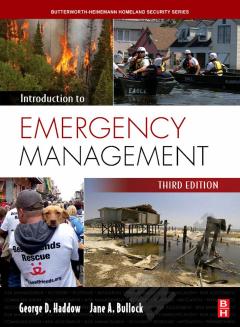Hazard Mitigation in Emergency Management
Hazard Mitigation in Emergency Management introduces readers to mitigation, one of the four foundational phases of emergency management, and to the hazard mitigation planning process. Authors Islam and Ryan review the hazard mitigation framework in both private sector and governmental agencies, covering the regulatory and legal frameworks for mitigation, as well as risk assessment processes and strategies, and tools and techniques that can prevent, or lessen, the impact of disasters. The book specifically addresses hazards posed by human activity, including cyber threats and nuclear accidents, as well as hurricanes, floods, and earthquakes. Readers will learn about the framework for the mitigation process, hazard identification, risk assessment, and the tools and techniques available for mitigation. Coverage includes both GIS and HAZUS, with tutorials on these technologies, as well as case studies of best practices in the United States and around the world. The text is ideal for students, instructors, and practitioners interested in reducing, or eliminating, the effects of disasters.Takes an all-hazards approach, covering terror attacks and accidents, as well as natural disastersReviews the hazard mitigation framework in both private sector and governmental agencies, covering the regulatory and legal frameworks for mitigationProvides a step-by-step process for creating a Hazard Mitigation Plan (HMP)Addresses the needs of local, state, and federal emergency management agencies and of the private sector, including IT mitigation
{{comment.content}}








 京公网安备 11010802027623号
京公网安备 11010802027623号